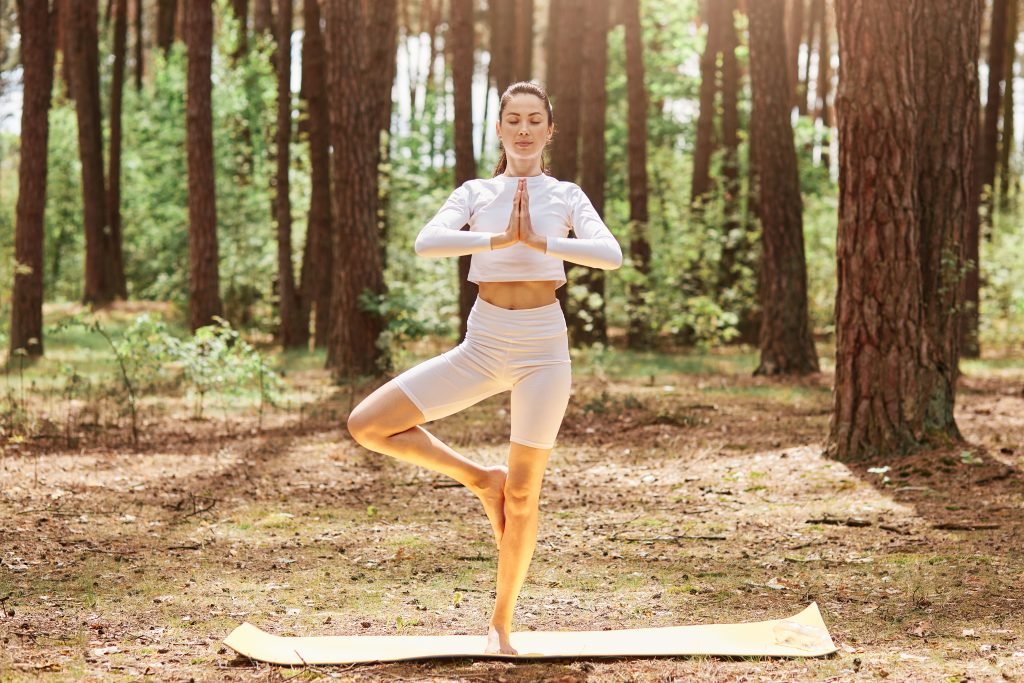In today’s busy and demanding world, many people are seeking a deeper sense of meaning and connection. The pursuit of spiritual awakening, a state of heightened consciousness and inner peace, has become increasingly popular. However, the journey towards enlightenment is unique to each individual, and there is no one-size-fits-all approach. In this article, I will explore various paths to spiritual awakening, offering practical advice and insights to help you navigate this profound journey.
Meditation – Calming the Mind
Meditation is perhaps the most well-known and widely practised spiritual discipline for a very good reason. In our modern world, we are constantly bombarded with distractions, stimuli, and the relentless voice of the ego. The ego, that part of us that craves validation, control, and identification with fleeting experiences, can be a formidable obstacle on the path to awakening. Its incessant mental chatter and persistent pulling of our attention outward can prevent us from accessing the stillness and depth within.
Meditation provides an antidote to this condition by training the mind to be present and focused. Through practices like breath awareness, body scans, or mantra repetition, we learn to anchor our attention in the here and now, observing the ebb and flow of thoughts without getting caught up in their turbulent currents.
Meditation helps us disidentify from the constant stream of mental commentary, judgments, and narratives that so often fuel our suffering.

With regular practice, the mind becomes quieter, and we can access deeper levels of awareness that lie beyond the ego’s limited perspectives. We may experience glimpses of expansiveness, interconnectedness, and a profound sense of peace that is our true nature – a state of being that is not dependent on external circumstances.
Mindfulness pioneer Jon Kabat-Zinn beautifully described meditation as “arriving at your own doorstep.” It is a homecoming, a journey inward that reveals the sacred and boundless dimensions of our being.
As the famous Zen proverb states,
“The mind can go in a thousand directions, but on this beautiful path, I walk in peace.”
Practical Advice: Start with simple breath awareness meditation, focusing on the sensations of inhaling and exhaling. Gradually increase your practice time as it becomes more comfortable. Remember, the goal is not to eliminate thoughts but to observe them without attachment or judgment.
Yoga – Uniting Mind, Body, and Spirit
Yoga is an ancient practice that combines physical postures (asanas), breathwork (pranayama), and meditation. By harmonizing the mind, body, and spirit, yoga can facilitate a profound sense of inner stillness and connection.
Yoga is a practice that has stood the test of time, offering a holistic approach to spiritual awakening. At its core, yoga recognizes the profound interconnectedness of our physical, mental, and energetic aspects, acknowledging that our state of being is influenced by the delicate balance and integration of these elements.
Through the practice of physical postures (asanas), the body is stretched, strengthened, and brought into alignment, cultivating greater flexibility, vitality, and embodied awareness. However, yoga is far more than just a physical exercise – it is a vehicle for exploring the subtler dimensions of our existence.

The incorporation of breathwork (pranayama) and meditation techniques helps to quiet the fluctuations of the mind and cultivate a state of focused awareness. As the body and breath synchronize, we become more attuned to the present moment, releasing tension and creating space for deeper levels of consciousness to emerge.
Yoga philosophy emphasizes the cultivation of virtues such as compassion, non-violence, and self-study, which serve to purify the heart and refine our relationships with ourselves and others. This holistic approach to personal growth supports the integration of our multidimensional selves, allowing us to embody our spiritual awakening in a tangible and grounded way.
As the pioneering yoga master B.K.S. Iyengar eloquently stated,
“Yoga allows you to rediscover a sense of wholeness in your life, where you do not feel yourself as fragmented into a mind and body.”
By weaving together the physical, mental, and spiritual aspects of our being, yoga offers a comprehensive and deeply transformative path towards awakening.
As the renowned yoga master B.K.S. Iyengar once said,
“Yoga allows you to find an inner peace that is not ruffled by the endless stresses and struggles of life.”
Practical Advice: Seek guidance from a qualified instructor, especially as a beginner. Incorporate yoga into your daily routine, even if it’s just a few minutes of gentle stretching and deep breathing.
Nature Immersion – Reconnecting with the Sacred
Spending time in nature can be a powerful catalyst for spiritual awakening. By disconnecting from the distractions of modern life and immersing ourselves in the beauty and wisdom of the natural world, we can cultivate a deeper sense of reverence and interconnectedness. As John Muir famously said,
“The clearest way into the Universe is through a forest wilderness.”
Practical Advice: Explore local parks, hiking trails, or gardens. Practice mindfulness by engaging your senses fully – the sounds of birdsong, the scent of wildflowers, the texture of tree bark. Allow nature to be your teacher.
Contemplative Practices – Exploring Inner Landscapes
Contemplative practices, such as journaling, art, or creative expression, can provide a gateway to self-discovery and spiritual growth. By turning inward and exploring the depths of our emotions, thoughts, and experiences, we can cultivate greater self-awareness and insight. As the renowned poet Rumi wrote,
“The wound is the place where the Light enters you.”
Contemplative practices offer a multitude of benefits on the path to spiritual awakening:
- Self-Discovery and Insight – By turning inward and reflecting on our thoughts, emotions, and experiences, we gain a deeper understanding of ourselves. Contemplative practices help us peel back the layers of conditioning, uncover hidden beliefs and patterns, and access the wisdom that lies within our own depths.
- Emotional Release and Healing – Creative expression provides a safe and cathartic outlet for processing difficult emotions, traumas, or unresolved issues. Whether through writing, painting, music, or movement, we can give voice to our innermost experiences, facilitating emotional release and integration.
- Intuitive Guidance – When we quiet the mind and allow our intuitive faculties to emerge, we can tap into a wellspring of inner guidance and inspiration. Contemplative practices help us attune to the subtle whispers of our soul, revealing insights and directions that may have been obscured by the noise of daily life.
- Spiritual Connection – For many, creative pursuits serve as a profound channel for connecting with the sacred and transcendent dimensions of existence. The act of creation itself can become a spiritual practice, evoking a sense of awe, reverence, and oneness with the creative force that permeates the universe.
- Self-Expression and Authenticity – Contemplative practices offer a safe space for us to express our authentic selves without fear of judgment or constraint. Through creative exploration, we can drop the societal masks and embrace the richness and complexity of our true nature.
- Mindfulness and Presence – The act of engaging in contemplative practice, whether it’s writing, painting, or playing music, naturally cultivates mindfulness and presence. We become fully immersed in the moment, allowing us to access a state of flow and heightened awareness.

Practical Advice: Experiment with different creative outlets – writing, painting, music, or dance – and use them as tools for self-reflection and expression. Share your creations with others, fostering a sense of connection and vulnerability.
Navigating the Ego’s Resistance
It’s important to acknowledge that the ego, our sense of separate self, may resist the journey towards spiritual awakening. The ego thrives on attachment, control, and identification with fleeting experiences. As we pursue inner growth, the ego may manifest as doubt, fear, or resistance.
Practical Advice: Recognize the ego’s tendencies with compassion and curiosity. Practice self-acceptance and let go of the need for perfection. Surround yourself with supportive individuals who understand and encourage your spiritual path.
In conclusion, the path to spiritual awakening is a deeply personal and multifaceted journey. By exploring various practices and remaining open to the wisdom within and around us, we can cultivate a profound sense of inner peace, connection, and purpose. Remember, the destination is not as important as the journey itself – one step at a time, with an open heart and mind.
Embark on Your Spiritual Journey Today
If you’re feeling called to explore a deeper sense of meaning and connection, now is the time to take the first step.
Schedule a one-on-one consultation with me, your spiritual and mindfulness coach. Together, we’ll navigate the challenges and celebrate the breakthroughs on your unique journey to spiritual growth.
Don’t let another day go by without nurturing your soul’s yearning for enlightenment. Take the leap and book your free discovery session now. Your authentic, awakened self is waiting to be discovered.




